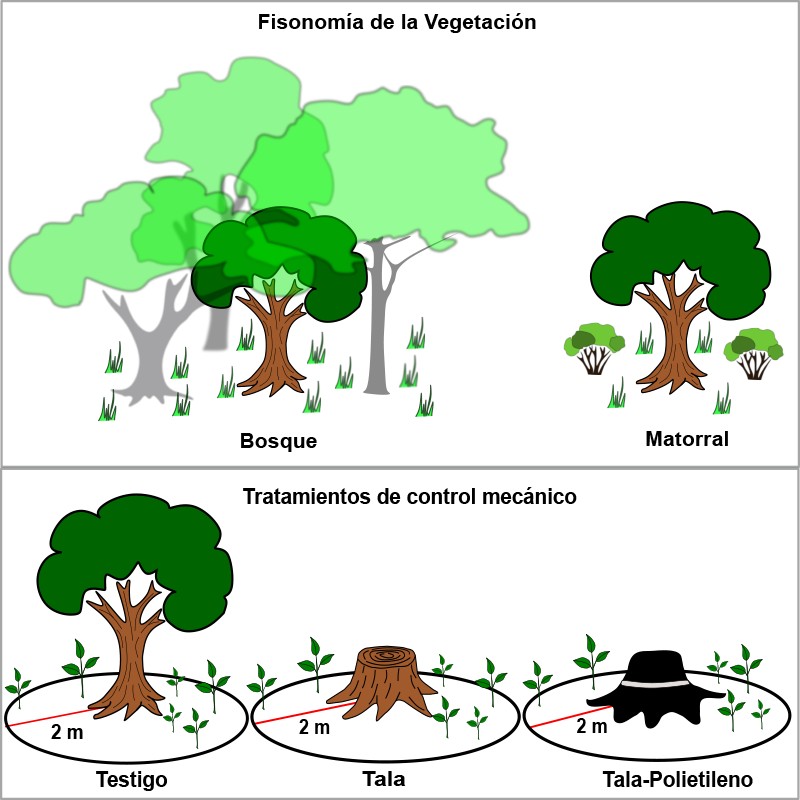Mechanical control of the non-native tree Ligustrum lucidum: survival, regeneration, and cost
DOI:
https://doi.org/10.31055/1851.2372.v54.n1.23588Keywords:
Black polyethylene, efficiency, felling, mechanical control, non-native woody species, resprout, seedlingAbstract
Background and Aims: There is an increasing demand of cost-benefit studies for the control of invasive non-native species. We assessed the efficiency of the application of mechanical control treatments on the non-native species Ligustrum lucidum, through resprouting and seedling regeneration, integrating cost and effort.
M&M: The study involved 120 trees, to which we applied the following treatments: 1) control group, uncut trees, 2) felling, 3) felling and covering the stump with black polyethylene. Additionally, a half of the trees were selected in forest physiognomy and a half in shrubland physiognomy. We removed all seedlings smaller than 50 cm tall around each treated tree.
Results: After 12 months, and two treatment applications, survival for the control group, felling, and felling with polyethylene cover was 100%, 95% and 68%, respectively. Resprout height was 78% and 95% lower under felling and felling with polyethylene cover treatments, respectively, than in the control group. Vegetation physiognomy had no effect on survival and resprout growth, while seedling regeneration was 300% higher in forest than in shrubland. The cost of application of felling with polyethylene cover was 150% higher than the cost of applying of felling only.
Conclusions: To control L. lucidum, we recommend felling with polyethylene cover because the higher cost and effort is compensated by its greater efficacy in the reduction of survival and height. We recommend the manual removal of seedlings mainly in sites with a shrubland physiognomy and a low cover of adults of L lucidum.

Downloads
Published
Issue
Section
License
Provides immediate and free OPEN ACCESS to its content under the principle of making research freely available to the public, which fosters a greater exchange of global knowledge, allowing authors to maintain their copyright without restrictions.
Material published in Bol. Soc. Argent. Bot. is distributed under a Creative Commons Attribution-NonCommercial-ShareAlike 4.0 International license.




